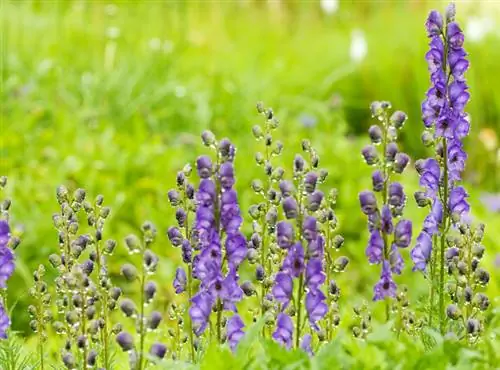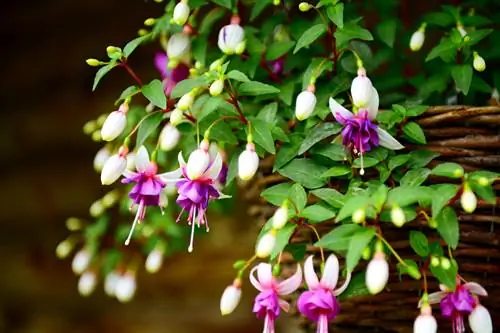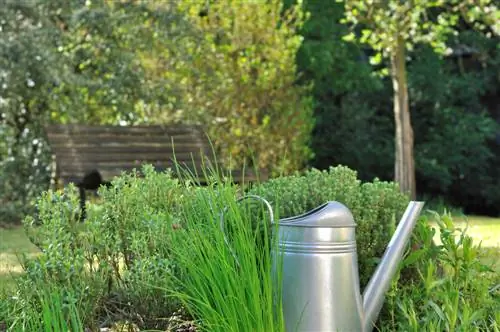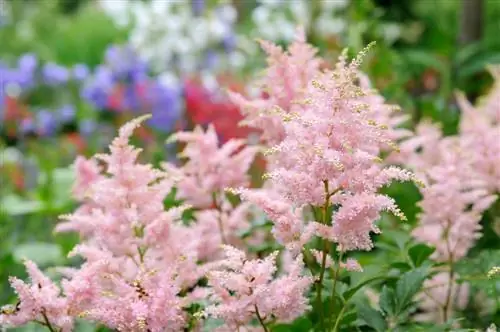- Author admin [email protected].
- Public 2023-12-16 16:46.
- Last modified 2025-01-23 11:20.
Despite being considered one of the most poisonous plants in Europe, monkshood (aconitum) is a popular perennial in many gardens in this country. This is not least due to the relatively uncomplicated care and the extremely magnificent flowers of this plant, which is available in many subspecies.
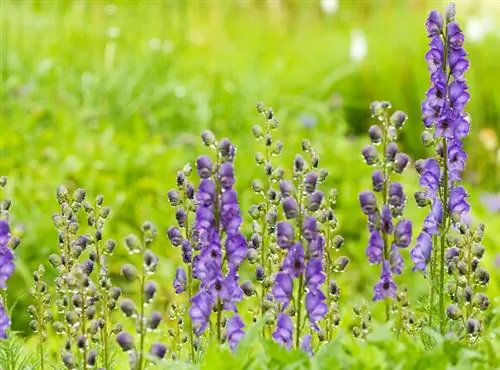
How do I properly care for a monkshood?
When caring for monkshood it is important: regular watering for even soil moisture, transplanting and dividing every 4-5 years, pruning after flowering, light fertilization in spring, and no winter protection necessary. Wear gloves due to toxicity.
How often does monkshood need to be watered?
The monkshood cannot tolerate constant waterlogging, but it still needs consistent soil moisture. Therefore, it should be watered thoroughly at least every few days, especially in the summer months. To prevent acute soil dryness, you can cover the soil at the monkshood location with a layer of mulch.
When and how can you transplant monkshood?
Monkshood is ideally transplanted in spring, but many species can also be transplanted in autumn. It is also a good idea to divide the plants on this occasion. Rejuvenation by division should generally be carried out every four to five years to maintain the vitality of the plants. When dividing or cutting monkshood, you should always wear gloves as protection, as simply touching the plants can cause symptoms of poisoning such as numbness in the affected body parts.
What should you pay attention to when cutting monkshood?
Since the seeds of monkshood are even more poisonous than the rest of the plant, the inflorescences are cut off as soon as possible after flowering. The stems are cut back to the ground as soon as all the leaves have wilted.
Which pests and diseases can damage monkshood?
Monkshood is generally not attacked by pests, but it can be partially susceptible to fungal diseases. Stunted growth and wilting can have the following causes:
- Waterlogging
- too dry location
- Location in the blazing sun
What type of fertilization makes sense for monkshood?
For monkshood culture, it is sufficient to spread some compost at its location on the bed in spring. Alternatively, you can also use a long-term fertilizer such as horn shavings (€32.00 on Amazon).
Can monkshood be overwintered?
Monkshood is generally hardy without any problems and does not require any special winter protection.
Tip
Some monkshood species grow very tall and then occasionally tend to fall apart. You can prevent this situation by placing a ring around the stems of the monkshood or by tying the clump-like growing plants together with a string.

